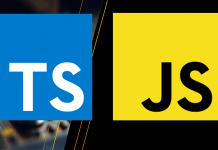Angular is a front-end JavaScript framework used for web development. Angular is rising in popularity for which there is a high demand for Angular developers. Edureify, the best AI Learning App with its coding Bootcamp job-ready courses aims to provide the best of the best preparatory materials to its students to help them begin their journey as web developers.
In this article, Edureify will provide the top 50 Angular interview questions and answers to help students prepare well for their interviews. Read on to know the Angular interview questions and answers.
Angular Interview Questions and Answers
- What is Angular?
“Angular is an open-source web application development framework created by Google.” It is a TypeScript front-end JavaScript framework that enables an easy and powerful way of building front-end web-based applications.
- Why was Angular introduced?
Angular was introduced for the creation of Single Page Applications. The Angular framework provides structure and consistency to web applications along with excellent scalability and maintainability.
- What is TypeScript?
TypeScript is a superset of JavaScript. TypeScript offers excellent consistency. It provides syntactic composition and makes the code base more comfortable to understand and maintain. TypeScript is highly recommended for this. The TypeScript code compiles down to JavaScript that can run efficiently in any environment.
- Mention the technologies used in Angular.
The technologies used in Angular are-
- TypeScript which is a subscript of JavaScript
- RxJS that enables developers to deal with asynchronous operations
- What is data binding?
The phenomenon of Data Binding allows internet users to manipulate web page elements using a web browser. Data binding does not require complex scripting or programming for it uses dynamic HTML. Data binding is used in web pages that contain interactive components like forms, calculators, tutorials, and games.
- Which type of data binding does Angular deploy?
Angular deploys the two-way binding. The changes that are made to the user interface are reflected in the corresponding model state. Also, any changes that are made in the model state are reflected in the UI state. Using the two-way binding enables the framework to connect the DOM to the Model Data via the controller. The only drawback is in performance since every change in the DOM has to be tracked.
- What are the four types of data binding in Angular?
The four types of data binding in Angular are-
- Event Binding
- Property Binding
- String Interpolation
- Two-way Data Binding
- What are Single Page Applications (SPA)?
Single Page Applications (SPA) are web applications that load once with new features simply being mere additions to the user interface. It is generated dynamically and does not load new HTML pages to display the new page’s content. This feature is possible through JavaScript’s ability to manipulate the DOM on the existing page itself. The SPA approach is faster and provides a seamless user experience.
- What are the advantages of using Angular?
Amongst the several advantages, some of the advantages of using Angular are-
- Being built using TypeScript, Angular allows developers to write strongly typed code that will get transpiled into JavaScript. These strongly typed codes are easy to read, maintain, and less prone to errors. It also provides better tooling with type hints and code completion.
- Angular enables to separate code into modules that can be used to wrap functionalities related to a specific task such as HTTP communication, data validation, routing, etc.
- It has a large ecosystem of tools, libraries, frameworks, plugins, etc. that fastens the development process and makes the experience more enjoyable.
- What are the disadvantages of using Angular?
The disadvantages of using Angular are-
- It is a little difficult to get good SEO results on an Angular application
- There are a lot of features in Angular. Learning them all to use effectively can be a little difficult
- Angular adds a lot of weight to the JavaScript bundle, therefore, using it for smaller projects is very inefficient and may increase the load size
- Differentiate between Angular and AngularJS.
The following table provides the difference between Angular and AngularJS-
| Feature | Angular | AngularJS |
| Language | TypeScript | JavaScript |
| Architecture | Makes use of components and derivatives | Supports Model-View-Controller design |
| Mobile Support | Supports all the popular mobile browsers | It is not supported by mobile browsers |
| Dependency Injection | Supports | Does not support |
| Routing | @Route configuration is used to define routing information | @routeProvider is used to provide routing information |
| Management | It is better structured, easy to create, and can manage bigger applications | It is difficult to manage with an increase in source code size |
- What are decorators in Angular?
Decorators are the design patterns or functions that define how Angular features work. Decorators are used to make prior modifications to a class, service, or filter.
- How many types of decorators do Angular support?
There are four types of decorators supported by Angular.
- Mention the four types of decorators supported by Angular.
The four types of decorators supported by Angular are-
- Class Decorators
- Property Decorators
- Method Decorators
- Parameter Decorators
- What are the recent updates of Angular10?
The following are the recent updates of Angular10-
- Older versions of TypeScript are not supported
- Provides warnings about CommonJS imports
- Has optional strict setting
- Has NGCC features
- Has compiler update
- Has URL routing update
- Deprecated APIs
- Has several bug fixes
- Has a new default browser configuration
- What are templates in Angular?
The Angular Templates are written in HTML that has Angular-specific elements and attributes. These templates provide a dynamic view to the user along with the model and controller’s information.
- What are Annotations in Angular?
Annotations in Angular enable the creation of an Annotation Array. Annotations are the metadata set on the class that is used to reflect the Metadata library.
- What are Directives in Angular?
The attributes that allow the users to write new HTML syntax specific to their applications are called Directives in Angular. The Directives are executed whenever the Angular compiler finds them in the DOM.
- How many types of Directives are supported by Angular?
Angular supports three types of Directives.
- Mention the three types of Directives supported by Angular.
The three types of Directives supported by Angular are-
- Component Directives
- Structural Directives
- Attribute Directives
- What is the full form of AOT compilation?
AOT compilation stands for Ahead-of-Time compiler.
- What is the role of the AOT compiler?
The AOT compiler converts the Angular HTML and TypeScript code into JavaScript code during the development phase. The development phase is the build phase, i.e., before the browser downloads and runs the code.
- Mention some of the advantages of the AOT compiler.
Some of the advantages of the AOT compiler are-
- Faster rendering
- Has few asynchronous requests
- Smaller Angular framework download size
- Can detect template errors quickly
- Provides better security
- What are Components in Angular?
Components are the building blocks of the user interface in an Angular application. Each component is associated with a template and is a subset of directives.
- What is the root component in Angular?
The AppComponent is the root component in Angular.
- What are the branches of the components of Angular?
AppComponent is the root component in Angular. The four main components that branch out of the AppComponent are-
- AuthComponent
- BrowseComponent
- CartComponent
- CheckoutComponent
The further branches of each of these components are-
- AuthComponent-
o Login
o Forgot Password
o SingUp
- BrowseComponent-
o List
o Details
- CartComponent-
o List
o Item
- CheckoutComponent-
o Address
o Payment
o Confirmation
- What are Pipes in Angular?
In Angular, Pipes are the simple functions that are designed to accept an input value, process, and return as an output, a transformed value that is more technical to understand. Angular supports various built-in pipes and also enables the creation of customizable pipes.
- Mention some of the features of Pipes in Angular.
Some of the features of Pipes in Angular are-
- The “ǀ” symbol is used to define the Pipe
- Other pipes can be chained with pipe
- Arguments can be provided to the pipe using the colon (:) sign
- What is the PipeTransform interface?
As the name suggests, the PipeTransform interface receives an input value and transforms it into the desired format with a transform () method. It is used to implement custom pipes.
- Provide the syntax for the PipeTransform interface.
Here is the syntax for the PipeTransform interface-
import {Pipe, PipeTransform} from ‘@angular/ core’; @Pipe({ name: ‘demopipe’ }) export class DemopipePipe implements Pipe Transform { transform (value: unknown,…args: unknown []): unknown { return null; } }
- What are Pure Pipes?
The pipes that use pure functions are the Pure Pipes. These pipes do not use any internal state and therefore, the output remains the same as long as the parameters passed remain the same. Pure Pipes are called by Angular only when it detects a change in the parameters being passed. Only one pure pipe is used throughout all components.
- What are Impure Pipes?
For all the change detection cycles in Angular, an impure pipe is called irrespective of the change in the input fields. For Impure Pipes, multiple pipe instances are created. The inputs that are passed to this pipe are mutable.
- What are filters in Angular?
Filters in Angular are used to format an expression and present it to the user. Their uses can be in view templates, controllers, or services.
- Name some of the in-built Filters in Angular.
Some of the in-built Filters in Angular are-
- Date- date can be formatted to a specific format
- Filter- can select a subset of items from an array
- Json- can format an object to Json string
- limitTo- can limit an array/ string into a specified number of elements/ characters
- lowercase- can format a string to lowercase
- What is view encapsulation in Angular?
The view encapsulation defines whether the template and styles defined within the component can affect the whole application and vice versa.
- How many types of view encapsulation strategies are provided in Angular?
Angular provides three encapsulation strategies.
- Mention the three encapsulation strategies in Angular.
The three encapsulation strategies in Angular are-
- Emulated
- Native
- None
- What are controllers?
The data of AngularJS applications are controlled by the AngularJS controllers. Controllers are regular JavaScript Objects. The ng-controller directive defines the application controller.
- What is String Interpolation in Angular?
String Interpolation is a one-way data binding technique. The String Interpolation outputs the data from TypeScript code to the HTML view. Double curly brace denotes the String Interpolation. String Interpolation enables to display of the data from the component to the view.
- What are Template Statements?
The properties or methods used in HTML for responding to user events are Template Statements. These templates create an interactive application to engage the users through actions such as submitting forms and displaying dynamic content.
- What is DOM?
DOM stands for Document Object Model. DOM is responsible for representing the content of a web page and changes in the architecture of an application.
- What is Bootstrapping?
Angular Bootstrapping enables the initialization of an Angular application.
- How many types of Bootstrapping are supported by Angular?
Two types of Bootstrapping are supported by Angular. They are-
- Manual Bootstrapping
- Automatic Bootstrapping
- What is Manual Bootstrapping?
Manual Bootstrapping gives more control to the professionals. The developer can decide how and when they need to initialize the Angular app. Manual Bootstrapping is useful in cases where professionals want to perform other tasks and operations before the Angular compiles the page.
- What is Automatic Bootstrapping?
The Automatic Bootstrapping helps to add the ng-app directive to the root of the application.
- Mention the Angular Building Blocks.
The Angular Building Blocks are-
- Components
- Data Binding
- Dependency Injection
- Metadata
- Modules
- Routing
- Services
- Template
- How can one create a service in Angular?
In Angular, Service is an object that can be substituted. Service is wired and combined with the help of dependency injection. services are deployed by being registered in a module where they need to be executed in.
- How many methods are there for creating a Service in Angular?
There are three methods of creating a Service in Angular.
- Mention the three methods of creating a service in Angular.
The three methods of creating a service in Angular are-
- Service
- Factory
- Provider
- Mention the three types of Angular directives.
The three types of Angular directives are-
- Components
- Structural
- Attributes
Here were the top 50 Angular interview questions and answers.
Edureify’s coding Bootcamp job-ready courses provide informative articles on JavaScript, Bootstrap, HTML, and more. With Edureify’s coding Bootcamp job-ready course students will get the benefit of-
- 200+ learning hours
- 6 months of program with 2 months of Bootcamp
- Learn from the industry experts
- Get their doubts cleared instantly
- Get professional career guidance
- Participate in real-life projects
So wait no more. Join the Edureify coding Bootcamp job-ready courses and kickstart your coding journey now.
Also, check out the CSS Interview Questions, React.js Interview Questions, SQL Query Interview Questions, JAVA Interview Questions, and more informative articles for better interview preparation with Edureify.
Some FAQs on Angular Interview Questions-
1. What is Angular?
“Angular is an open-source web application development framework created by Google.” It is a TypeScript front-end JavaScript framework that enables an easy and powerful way of building front-end web-based applications.
2. What is view encapsulation in Angular?
The view encapsulation defines whether the template and styles defined within the component can affect the whole application and vice versa.
3. What is the root component in Angular?
The AppComponent is the root component in Angular.
4. What is DOM?
DOM stands for Document Object Model. DOM is responsible for representing the content of a web page and changes in the architecture of an application.
5. From where can I learn more about Angular and JavaScript?
Edureify with its coding Bootcamp job-ready courses has all the materials on Angular and JavaScript for students to learn more.
Master Your Coding Skills with BootSelf AI
If you're looking to enhance your coding abilities and upskill in artificial intelligence, look no further than the BootSelf AI app. This innovative platform provides AI-based coding lessons that are tailored to your individual learning pace.
Available on both iOS and Android, you can download the BootSelf AI app and start mastering coding skills today:








